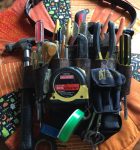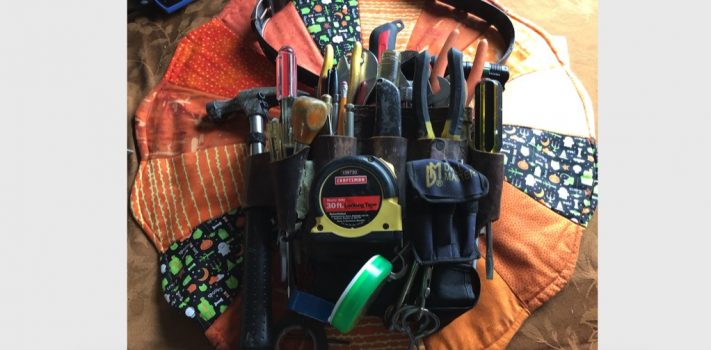Over the decades, I became a seasoned (older) person having built, renovated a few homes, rebuilt a score of autos, maintained survival retreats, watercraft, motorcycles, and so forth. These all at some point require specific tools, be it just a screwdriver, or a Crescent wrench. Chances are, working at a building site, or other situation you will have most tools that you need, but there is that unplanned event that requires a special tool. When I was younger, my goal was to have tools, lots of tools, and soon discovered the need for storage and a large tool chest on wheels was the logical solution. That worked for organizing tools but was not always convenient and sometimes required several trips back and forth to the tool chest.
Today, I still have a large chest on wheels in my workshop, and it has served me well for use in the shop. But over the years, different off-sire jobs dictated the need for a hand-carry toolbox. So I created a toolbox for electrical jobs, another for carpenter’s needs, and still another for plumbing use. In the 1970s I added a tool pouch, which was the type that roofers use, and it served me well until I discovered the electrical type pouch. This was the one made for General Electric, for their electrical workers. This discovery was a “Kodak moment” that I had while working remote projects. There, Iearned about not having the right tool for the job bigger screwdriver, or maybe a pair of pliers, a level, etc. The frustration of having to stop what I was working with or on and go back and find the tool I needed was time-consuming and interruptions in my thought process and workflow.
 During the 1980s also I discovered my love for survival prepping. As I researched, I decided what items and quantities I wanted for any potential scenarios. In addition to those items, I realized the requirement for a small set of basic tools was needed, keyword basic, and also how to transport them. A hand-carry toolbox was not the ideal solution as I wanted and needed to limit size and weight and most importantly I wanted to be able to see what I had available. Needed general-purpose tools easy to transport and provide a wide spectrum of needs in most given situations. I settled on the electrical tool pouch or now as I call it the “bug out tool pouch”, with knowledge from my years of doing many things, what basic tools would work for me and still be easy to transport.
During the 1980s also I discovered my love for survival prepping. As I researched, I decided what items and quantities I wanted for any potential scenarios. In addition to those items, I realized the requirement for a small set of basic tools was needed, keyword basic, and also how to transport them. A hand-carry toolbox was not the ideal solution as I wanted and needed to limit size and weight and most importantly I wanted to be able to see what I had available. Needed general-purpose tools easy to transport and provide a wide spectrum of needs in most given situations. I settled on the electrical tool pouch or now as I call it the “bug out tool pouch”, with knowledge from my years of doing many things, what basic tools would work for me and still be easy to transport.
The pouch size provides a decent amount of space and limits those selections of tools that I want. I do not use the pouch to mount on my pants belt. Instead, I prefer to use it as a shoulder carry bag which distributes the weight and makes it easy to load or unload.
The items I have on the shoulder-carried pouch include: Claw hammer, tape measure, 6 Phillip and flat blade screwdrivers of different sizes, electrical tape, silicone tape, small level, tile knife, scissors, 6” carpenters pry bar, channel locks, pliers, awl, flashlight, needle nose pliers, 6” & 8” Crescent wrenches, large wire cutter, battery pliers, 6” keyhole saw, black marker, pencil, 2” wood chisel, 6” steel ruler, 6 tie wraps, putty knife, expanding 12” magnet retriever, and two paint can keys. Also, you will notice in the picture a round green repurposed mints box. In that, I carry a few screws and nails.
The pouch with tools weighs in at about 15 pounds, and the pouch in the picture is about 40 years young and still very serviceable.










